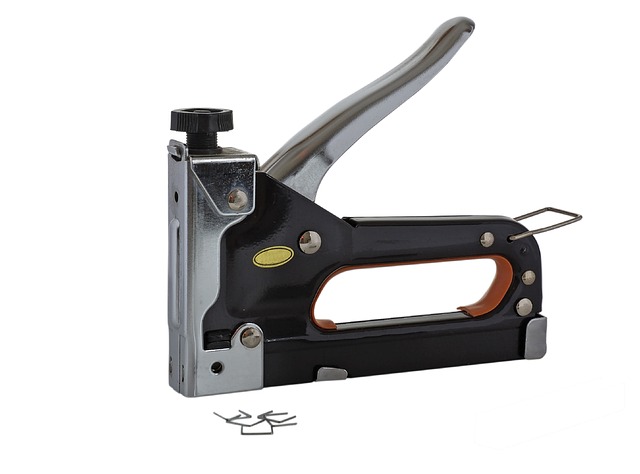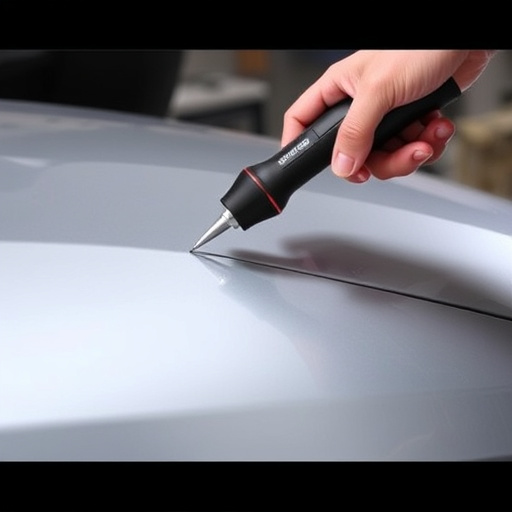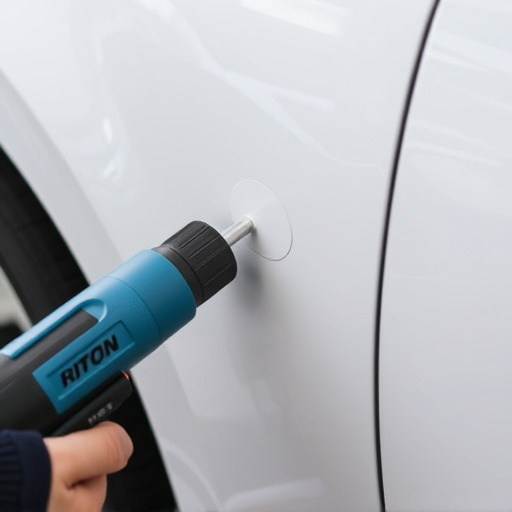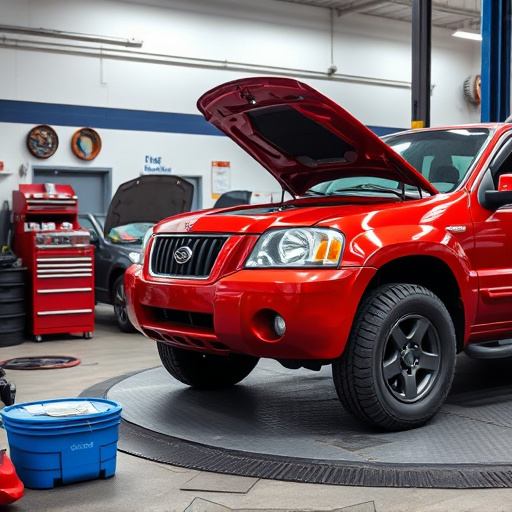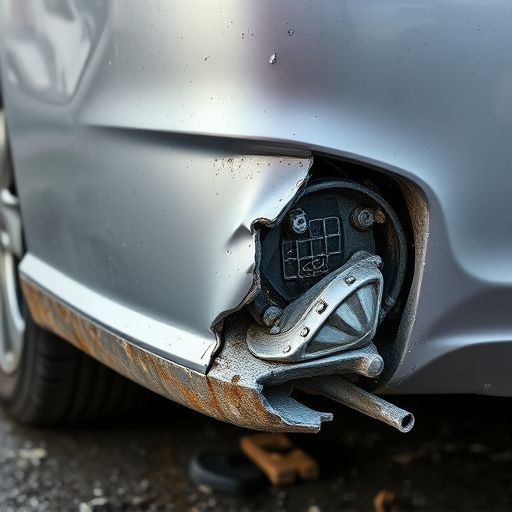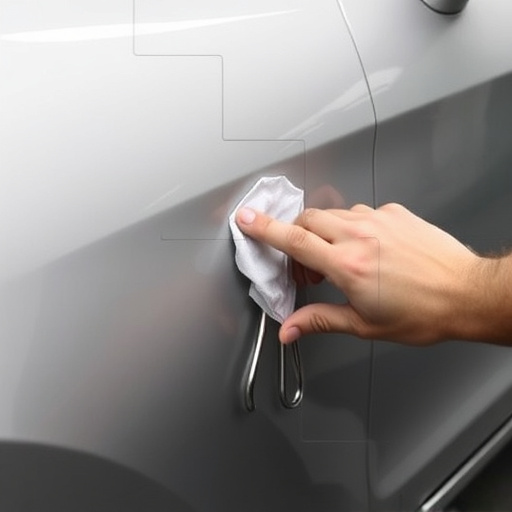Aluminum is a key material in modern automotive production due to its unique blend of lightweight design (reducing weight by 40% compared to steel) and structural integrity. This significantly improves fuel efficiency, vehicle dynamics, safety, and handling. Aluminum's repairability makes collision repair faster and more affordable, while its combination with carbon fiber components enhances performance without the high manufacturing costs associated with the latter. Its widespread use in car design contributes to efficient, safe, and sustainable vehicles, meeting market demands for environmentally friendly transportation.
Modern cars are evolving rapidly, driven by a need for enhanced performance, improved fuel efficiency, and advanced safety features. At the heart of this transformation is the increasing adoption of aluminum body components. This metal offers a unique blend of lightweight strength, excellent corrosion resistance, and cost-effectiveness, making it an indispensable material in contemporary automotive design. By replacing traditional materials like steel with aluminum, automakers can achieve significant weight reductions, resulting in improved handling, reduced emissions, and better overall performance. Furthermore, aluminum’s versatility allows for innovative designs and enhanced safety features, such as crumple zones and side impact protection, that ultimately contribute to safer vehicles. While carbon fiber components are also gaining traction due to their superior strength-to-weight ratio, aluminum remains a practical and widely used choice, offering a compelling balance of performance, affordability, and durability.
- Lightweight and Efficient: Aluminum's Advantage
- – Discussion on the growing need for lightweight materials in automotive design to improve fuel efficiency and performance.
- – Highlighting aluminum's inherent properties: low density, high strength-to-weight ratio, and excellent corrosion resistance.
Lightweight and Efficient: Aluminum's Advantage

Aluminum has become an indispensable material in modern automotive design, offering a unique blend of lightweight and efficiency that sets it apart from traditional materials like steel. One of its most significant advantages is its superior strength-to-weight ratio. Aluminum components are up to 40% lighter than their steel counterparts while maintaining equal or even higher structural integrity. This weight reduction is not just about performance; it has a direct impact on fuel efficiency and overall vehicle dynamics, allowing for better handling and reduced emissions.
In the competitive automotive industry, where every gram counts, aluminum’s lightweight properties are a game-changer. By incorporating aluminum body components, car manufacturers can design lighter vehicles without compromising safety or structural integrity. This advantage is further enhanced when combined with other advanced materials like carbon fiber components, creating a hybrid that offers both strength and reduced weight. Moreover, the use of aluminum in collision repair services and automotive repair has become more prevalent, as it facilitates faster and more cost-effective car body restoration, ensuring vehicles return to their optimal condition post-accident.
– Discussion on the growing need for lightweight materials in automotive design to improve fuel efficiency and performance.

The automotive industry is undergoing a significant transformation, driven by a pressing need for lighter and more efficient vehicles. As fuel costs rise and environmental concerns grow, car manufacturers are increasingly turning to lightweight materials to enhance performance and reduce emissions. The traditional steel bodywork, once the norm, is being challenged by innovative alternatives like aluminum body components. This shift is not merely a trend; it’s a necessity in today’s market.
Aluminum offers an ideal solution due to its remarkable strength-to-weight ratio. Unlike carbon fiber components, which are expensive and complex to manufacture, aluminum can be easily formed and welded while maintaining exceptional structural integrity. Its lightweight nature translates directly into improved fuel efficiency, reduced emissions, and enhanced maneuverability—all critical factors for modern cars. Furthermore, the ease of repair, including car scratch repair, vehicle collision repair, or car dent repair, makes aluminum an even more appealing choice in terms of cost-effectiveness and sustainability.
– Highlighting aluminum's inherent properties: low density, high strength-to-weight ratio, and excellent corrosion resistance.

Aluminum has become an increasingly popular choice for modern car manufacturing due to its exceptional properties that offer a significant advantage over traditional materials like steel. One of its most notable attributes is its low density, making aluminum components lighter in weight compared to their steel counterparts. This reduced weight is not only environmentally beneficial by decreasing fuel consumption and emissions but also improves overall vehicle performance. The high strength-to-weight ratio of aluminum allows for stiffer bodies and more efficient structural designs, enhancing safety and handling without compromising on fuel efficiency.
Moreover, aluminum exhibits excellent corrosion resistance, a feature that sets it apart from carbon fiber components, which require protective coatings. This natural barrier makes aluminum particularly suited for use in various climates and environments, ensuring longer-lasting vehicles. In the event of a collision or during auto body shop repairs, aluminum’s durability means that cars can be repaired and restored with minimal structural damage, keeping them on the road for longer. So, when it comes to modern car design, aluminum’s inherent strengths make it an indispensable material in creating efficient, safe, and sustainable vehicles.
Aluminum body components have become indispensable in modern car design, offering a lightweight yet robust solution to enhance fuel efficiency and overall performance. As the automotive industry continues to prioritize sustainability and reduce emissions, materials like aluminum will remain at the forefront, providing a compelling alternative to traditional steel and even rivaling the properties of carbon fiber components. Its unique advantages make it a key enabler for the future of automobile engineering.
